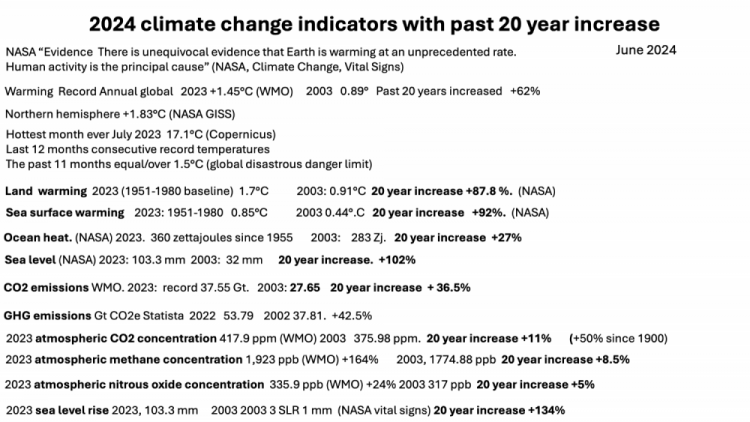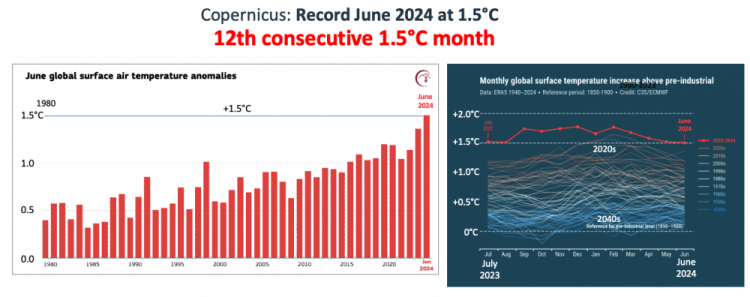DIRE PLANETARY EMERGENCY SIGNS
Already committed climate change
The radiative heat forcing of today's atmospheric GHGs commits the world to an equilibrium global warming of over 1.5°C, and 1.5°C will be at or soon after 2030
(IPCC AR6)
With no immediate action on emissions 2°C will be by 2050 (IPCC AR6).
Commitment was 2°C back in 2012
'The current (2014) RF(radiative forcing) from GHGs maintained indefinitely (i.e., the commitment from constant greenhouse gas concentrations) would correspond to approximately 2°C warming.'
(IPCC AR5 WG1 12.5.4.2)
The radiative heat forcing of today's atmospheric GHGs commits the world to an equilibrium global warming of over 1.5°C, and 1.5°C will be at or soon after 2030
(IPCC AR6)
With no immediate action on emissions 2°C will be by 2050 (IPCC AR6).
Commitment was 2°C back in 2012
'The current (2014) RF(radiative forcing) from GHGs maintained indefinitely (i.e., the commitment from constant greenhouse gas concentrations) would correspond to approximately 2°C warming.'
(IPCC AR5 WG1 12.5.4.2)
Site maintained by Peter Carter

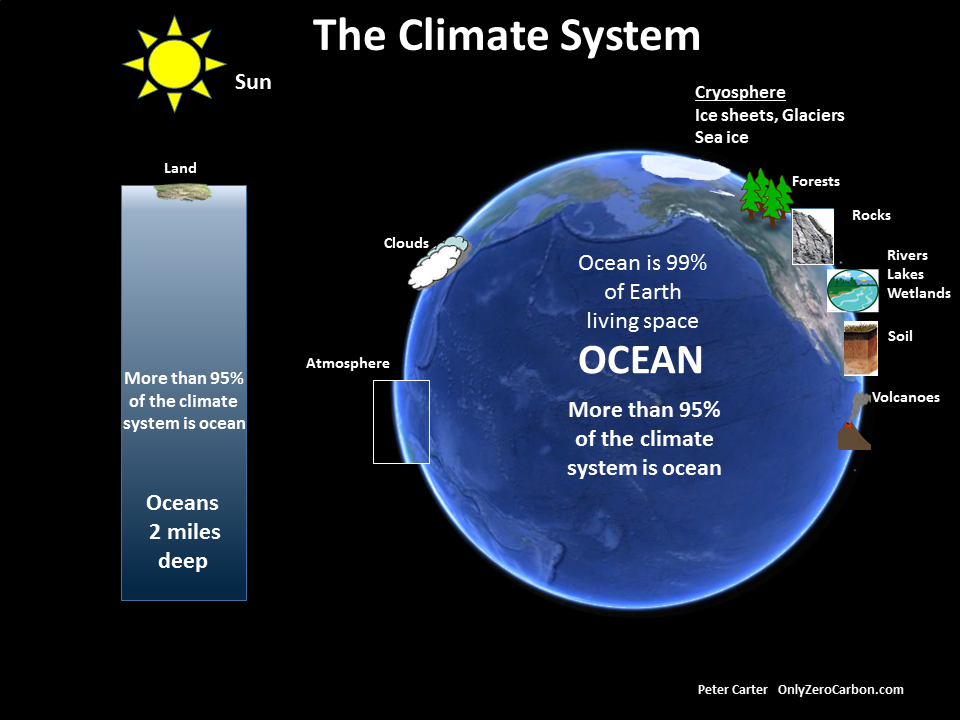
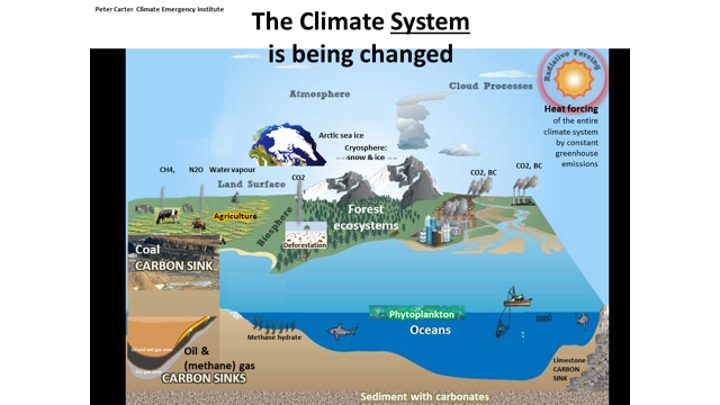
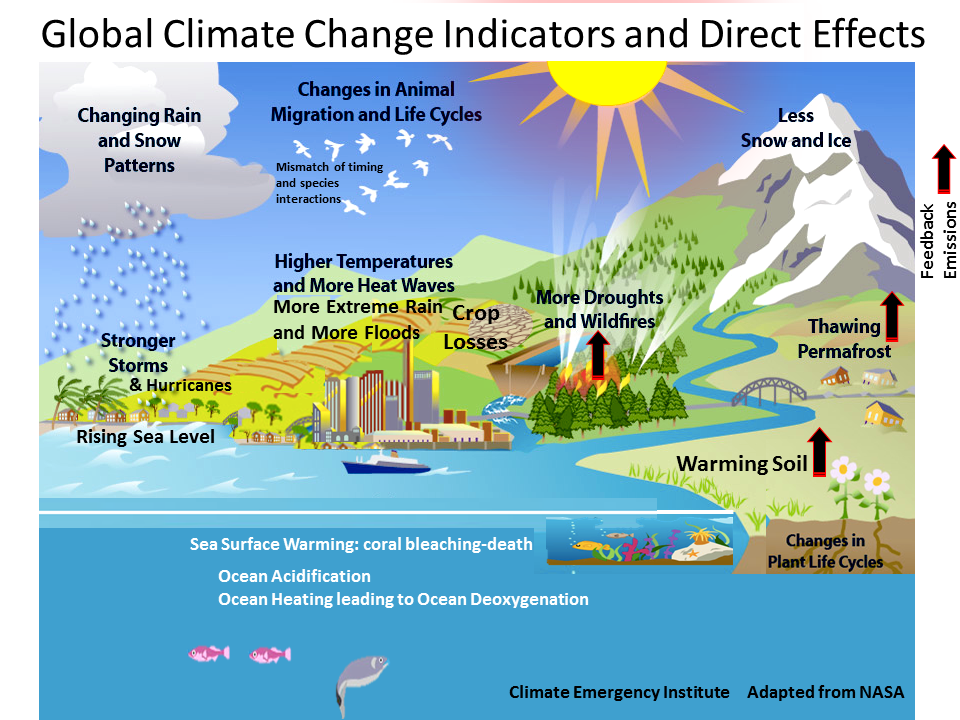
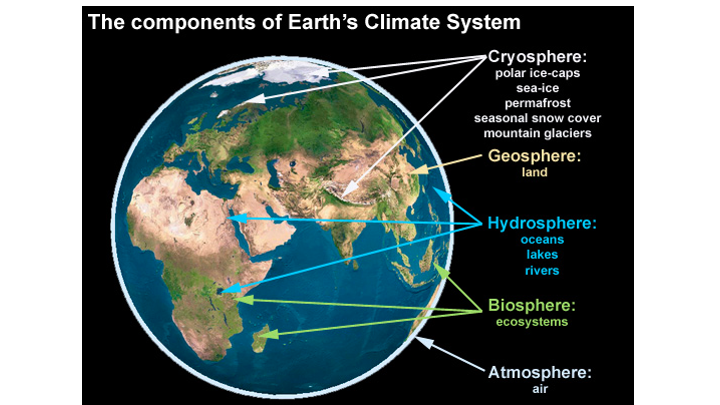
Here we have a record of climate change indicators, from the climate monitoring centers such as NASA and NOAA (in the U.S.). It covers changes the entire climate system, which is essential for climate change risk and future impact assessment, mitigation and adaptation planning.
Climate change is actually climate system change
It is really the state of our children's climate and all future generations
All indicators are record high, increasing at record rates (2024).
as shown in the composite opposite (1850-2023)
2023 was a big record global temperature increase, and
the record June 2024, makes 13 months of record temperatures
and 12 months of temperatures at/above 1.5°C.
Global CO2 emissions were a new all-time high in 2023.
With no action or plans to change fossil fuel energy dominance,
life will get harsher everywhere, leading an unliveable planet,
which the IPCC 6th Assessment warned about.
Atmospheric CO2 (most of heating, all ocean acidification) is at a 14 million year high, increasing fastest in past 50 million years (IPCC AR6).
May 2024 was record ever 2 year atmospheric CO2 increase and accelerating (6 June 2024, NOAA).
Atmospheric methane has increase 266% (huge increase factor 2.6)
and an explosive increased 2019-2022.
Northern hemisphere temperature is increasing at an accelerating rate since 2000, far faster than the global average.
The oceans, by far the largest and most crucial climate system component, are being heated, acidified and deoxygenated, all at an accelerating rate.
The climate system (and planet) is in a no-analog state, never experienced by our species or hominid ancestors.
It is really the state of our children's climate and all future generations
All indicators are record high, increasing at record rates (2024).
as shown in the composite opposite (1850-2023)
2023 was a big record global temperature increase, and
the record June 2024, makes 13 months of record temperatures
and 12 months of temperatures at/above 1.5°C.
Global CO2 emissions were a new all-time high in 2023.
With no action or plans to change fossil fuel energy dominance,
life will get harsher everywhere, leading an unliveable planet,
which the IPCC 6th Assessment warned about.
Atmospheric CO2 (most of heating, all ocean acidification) is at a 14 million year high, increasing fastest in past 50 million years (IPCC AR6).
May 2024 was record ever 2 year atmospheric CO2 increase and accelerating (6 June 2024, NOAA).
Atmospheric methane has increase 266% (huge increase factor 2.6)
and an explosive increased 2019-2022.
Northern hemisphere temperature is increasing at an accelerating rate since 2000, far faster than the global average.
The oceans, by far the largest and most crucial climate system component, are being heated, acidified and deoxygenated, all at an accelerating rate.
The climate system (and planet) is in a no-analog state, never experienced by our species or hominid ancestors.
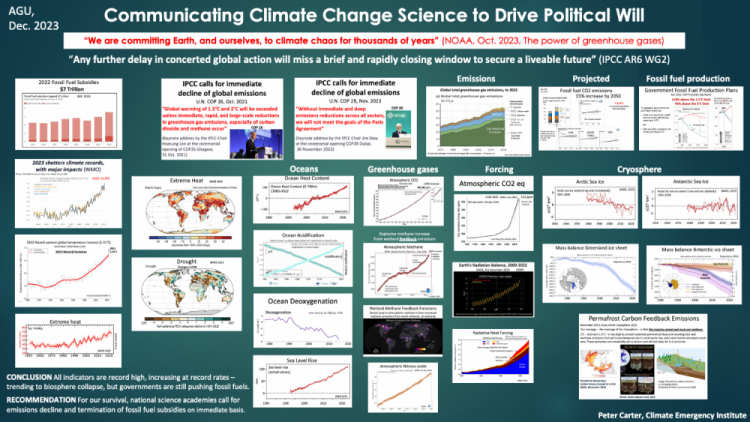
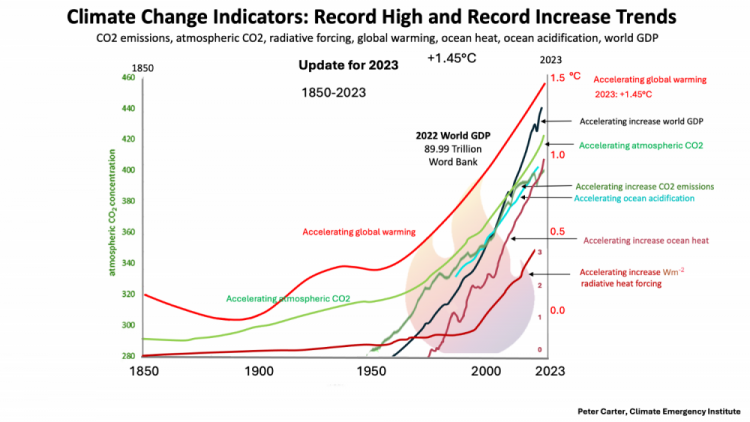
2023 AGU conference
Indicators record high increasing at record rates. Immediate global emissions decline (IPCC AR6)
Indicators record high increasing at record rates. Immediate global emissions decline (IPCC AR6)
